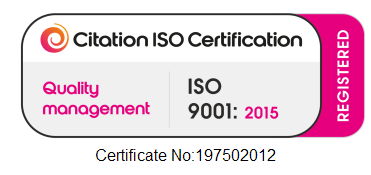What is an Electrical Installation Condition Report?
A formal electrical inspection and test report is undertaken periodically to determine an electrical installation’s current state.
When do I need an Electrical Inspection Condition Report?
It may be a requirement for the building insurance company, building lease, as part of a planned maintenance contract or when a property is bought or sold. The report is to ensure any issues are brought to the attention of the client.
How often does an Electrical Inspection Report need to be done?
This is a periodic inspection and is dependent on the type of installation as well as the opinion of the previous test engineer or contractor to determine when the retest date should be set. For example:
•Temporary installation – frequently, but no longer than every 3 months.
•Public entertainment license – annually
•Commercial installations – no longer than 5 years (according to the industry guidance)
•Domestic dwellings -10/20 years unless selling the property or change of tenant.
•If an installation shows signs of deterioration, the engineer may recommend a shorter retest date, e.g., 3 years
Can I spread the testing out?
Some larger installations are partially tested, e.g., 20% a year over 5 years. This is a commercial benefit if the installation is in test at the beginning of the process and the client, ensures that a new 20% is tested each year over the 5 years.
Who is responsible for the testing process?
The client, to ensure compliance. It is beneficial for the contractor and client to discuss what the process is and how it will impact the building operation to minimise disruption. If elements of the installation are not tested, then it is documented as an agreed limitation. This should be understood by the client otherwise they could receive a devalued report with numerous limitations listed.
What happens when I receive the Report?
It will provide a lot of information that most clients may not understand. It will need explaining to ensure the client is aware of the potential risks and recommendations. The report will show either as Satisfactory or Unsatisfactory for the scope of works tested.
Recommendations & Remedial works if the report is Unsatisfactory
C1: – Urgent action is required as it is dangerous (most contractors will instantly inform the client and make it safe)
C2: – These are potentially dangerous and need addressing as soon as possible.
C3: – Improvement is recommended and further remedial work is not required for the report to be deemed satisfactory.
Interpreting the regulations and categorising the issues correctly is down to the experience of the contractor as it can be subjective.
Some people will not instruct the same contractor to complete the EICR along with the recommendations, as it can be perceived as generating work when it’s not required. If there is a good working relationship between the client and contractor, then often, this will produce a more cost-effective and satisfactory result for all concerned
How do I know I am getting value for money?
Cost is always important, but you get what you pay for. A two-man experienced team will test between 3-4 circuits an hour. Some contractors produce certification with more than 30–40 circuits a day which can be justified if they were single-point circuits rather than lighting or ring main circuits, but often there will be a larger percentage of limited testing and recommendations for further investigation required as they haven’t taken enough time to identify the circuits.
How do I find the right testing contractor?
Do your homework, just because a contractor is accredited to the ECA or NICEIC etc doesn’t mean they are experienced in carrying out inspection and testing. Ask them how they would go about testing critical or high-level circuits. Ideally, get a referral.
7th March 2023






